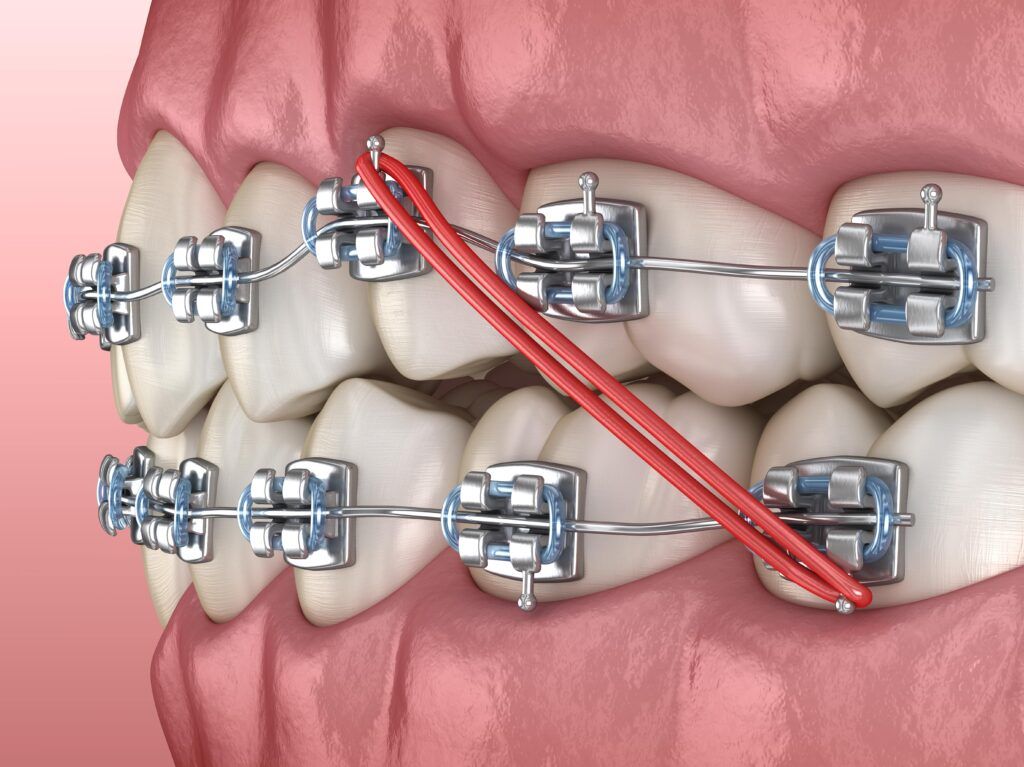What Establishes Cumming Braces and Aligners In Addition To Various Other Orthodontic Treatments
What Establishes Cumming Braces and Aligners In Addition To Various Other Orthodontic Treatments
Blog Article
Comprehensive Overview to Orthodontics Treatments for Correcting Oral Imbalances
In the realm of orthodontics, the journey to attaining a flawlessly lined up smile involves a myriad of procedures customized to deal with oral misalignments. From conventional braces to undetectable aligners and even medical choices, the field of orthodontics uses a series of services to deal with varying degrees of oral irregularities. Understanding the intricacies of each procedure, including their systems, advantages, and potential disadvantages, is important in making notified decisions regarding one's orthodontic treatment. As we navigate with the thorough overview to orthodontic treatments for correcting oral misalignments, the detailed details of each technique will certainly unravel, clarifying the path toward a unified and useful dental placement.
Orthodontic Procedures Overview

Normal modifications and tracking are vital components of orthodontic therapy to make sure development is on track and to make any kind of necessary adjustments along the way. By undertaking orthodontic treatments, patients can not just achieve a straighter smile but additionally enhance their total dental health and wellness and function.
Typical Dental Braces: How They Work
When taking into consideration orthodontic treatments for dental misalignments, conventional dental braces stand out as a reliable technique for correcting teeth placing. Conventional dental braces are composed of brackets, cables, and bands that work with each other to use continuous pressure on the teeth, slowly relocating them right into the preferred positioning.
One secret element of how standard braces work is the procedure of bone remodeling. As pressure is related to the teeth via the dental braces, the bone surrounding the teeth is improved to sustain the new tooth positions. This improvement is vital for the lasting security of the dealt with positioning. People will require normal changes at the orthodontist's workplace to ensure the dental braces proceed to use the appropriate stress for reliable teeth motion.
Unnoticeable Aligners: Cons and pros
Unnoticeable aligners use a discreet and practical option to standard dental braces for dealing with oral misalignments. These clear, custom-made trays are virtually invisible when put on, making them an attractive choice for individuals seeking an extra visually pleasing orthodontic therapy. Among the key advantages of undetectable aligners is their removability, permitting less complicated upkeep of dental hygiene contrasted to typical braces. Patients can eliminate the aligners prior to eating or cleaning their teeth, lowering the risk of food getting embeded the device and streamlining the cleaning process.

Surgical Orthodontic Options
Surgical interventions in orthodontics existing sensible alternatives for attending to intricate dental misalignments that may not be properly resolved with conventional orthodontic treatments. While unseen aligners and standard braces can deal with lots of orthodontic concerns, particular cases call for medical intervention to attain ideal results. Surgical orthodontic choices are usually advised for extreme malocclusions, substantial jaw inconsistencies, and cases where the underlying bone framework requires adjustment to attain appropriate placement.
One common medical orthodontic procedure is orthognathic surgery, which involves rearranging the jaws to deal with useful concerns such as problem eating or speaking. This surgical procedure is usually executed in cooperation with an orthodontist who helps align the teeth before and after the procedure. Surgical orthodontics may additionally entail procedures to subject impacted teeth, get rid of excess gum tissue, or improve the jawbone to create a much more unified facial profile.
Prior to thinking about medical orthodontic options, people go through an extensive examination to establish the need and potential benefits of such treatments. braces. While surgery may appear difficult, it can considerably enhance both the function and looks of the smile in instances where standard orthodontic treatments fail
Retainers and Post-Treatment Care

Post-treatment treatment entails adhering to the orthodontist's directions carefully. This may include appropriate dental hygiene methods, participating in follow-up consultations, and wearing the retainers as recommended. Failing to comply with post-treatment care guidelines can lead to regression, where the teeth progressively return towards their original positions. Regular retainer wear, great oral health, and normal dental examinations are important for keeping the results accomplished through orthodontic surgery and ensuring the long-term security of the dealt with dental alignment.
Verdict
Finally, orthodontic treatments provide numerous alternatives for fixing oral misalignments. Typical my explanation dental braces use steel brackets and cords to move teeth into correct placement. Unseen aligners provide a more very discreet choice yet might not be ideal for all cases. Surgical orthodontic options are available for more serious misalignments. Retainers are commonly utilized post-treatment to keep the brand-new alignment. On the whole, orthodontic procedures can successfully enhance dental health and wellness and visual appearance.
As we navigate with the comprehensive guide to orthodontic treatments for correcting dental imbalances, the intricate details of each approach will unfold, losing light on the course toward a unified and useful oral placement. - braces
One of the most typical orthodontic therapies is the usage of braces, which consist of metal braces and cords that use gentle pressure to slowly move teeth right into the wanted position.When thinking about orthodontic therapies for oral imbalances, traditional braces stand out as a time-tested technique for remedying teeth placing. In addition, invisible aligners may not be suitable for complicated orthodontic problems that need even more considerable teeth activity, as they are commonly recommended for mild to moderate cases. Retainers are custom-made orthodontic devices developed to hold teeth in their remedied settings after the conclusion of orthodontic therapy.
Report this page